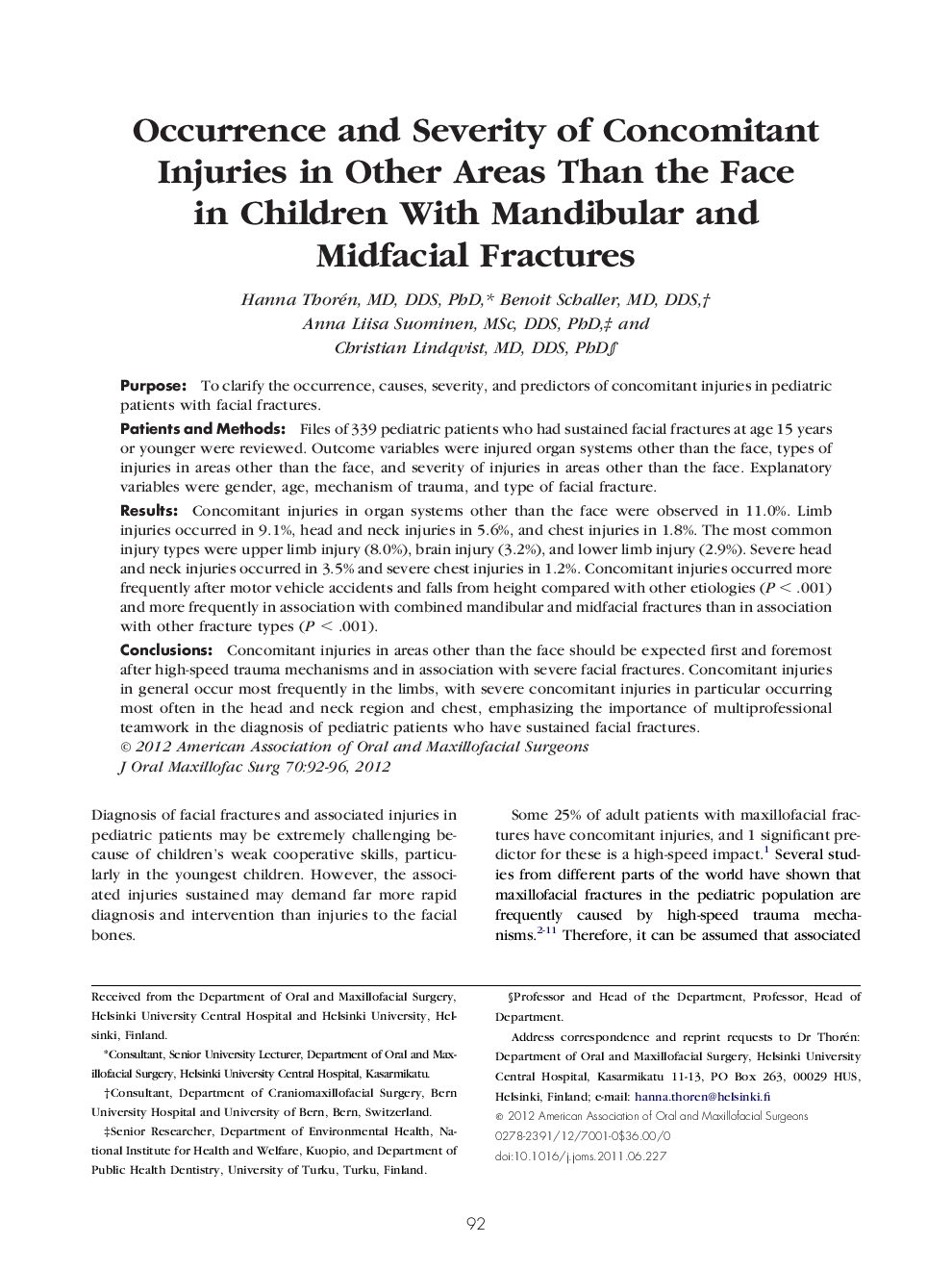| Article ID | Journal | Published Year | Pages | File Type |
|---|---|---|---|---|
| 3156726 | Journal of Oral and Maxillofacial Surgery | 2012 | 5 Pages |
PurposeTo clarify the occurrence, causes, severity, and predictors of concomitant injuries in pediatric patients with facial fractures.Patients and MethodsFiles of 339 pediatric patients who had sustained facial fractures at age 15 years or younger were reviewed. Outcome variables were injured organ systems other than the face, types of injuries in areas other than the face, and severity of injuries in areas other than the face. Explanatory variables were gender, age, mechanism of trauma, and type of facial fracture.ResultsConcomitant injuries in organ systems other than the face were observed in 11.0%. Limb injuries occurred in 9.1%, head and neck injuries in 5.6%, and chest injuries in 1.8%. The most common injury types were upper limb injury (8.0%), brain injury (3.2%), and lower limb injury (2.9%). Severe head and neck injuries occurred in 3.5% and severe chest injuries in 1.2%. Concomitant injuries occurred more frequently after motor vehicle accidents and falls from height compared with other etiologies (P < .001) and more frequently in association with combined mandibular and midfacial fractures than in association with other fracture types (P < .001).ConclusionsConcomitant injuries in areas other than the face should be expected first and foremost after high-speed trauma mechanisms and in association with severe facial fractures. Concomitant injuries in general occur most frequently in the limbs, with severe concomitant injuries in particular occurring most often in the head and neck region and chest, emphasizing the importance of multiprofessional teamwork in the diagnosis of pediatric patients who have sustained facial fractures.
